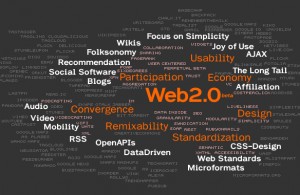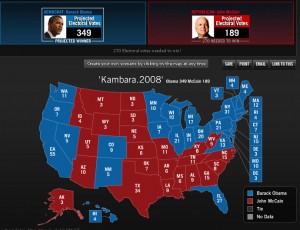 Don has a thought-provoking post on the use of Facebook in mass-interpersonal persuasion. In a post-lection analysis at CLU, José brought up the idea of how Obama created what is tantamount to a social movement using web 2.0 tools. I was reading a US News article on the use of YouTube in the 2008 campaign and couldn’t help but recall the ParkRidge47 spectacle from early 2007 and the role of viral multimedia in politics and mass-interpersonal interaction. In this video, the creator, Phil de Vellis, talks about how politicians should inspire content and how his Vote Different mashup went viral despite his posting anonymity.
Don has a thought-provoking post on the use of Facebook in mass-interpersonal persuasion. In a post-lection analysis at CLU, José brought up the idea of how Obama created what is tantamount to a social movement using web 2.0 tools. I was reading a US News article on the use of YouTube in the 2008 campaign and couldn’t help but recall the ParkRidge47 spectacle from early 2007 and the role of viral multimedia in politics and mass-interpersonal interaction. In this video, the creator, Phil de Vellis, talks about how politicians should inspire content and how his Vote Different mashup went viral despite his posting anonymity.
The rise of political video watching is evident from Pew Research Center figures, going from 24% in December of 2007 to 39% in late October. What I find interesting is how video is being used by both the public and the candidates. The USNews article talks about how Obama’s campaign posted on YouTube a rebuttal to clips of Rev. Wright’s inflammatory remarks going viral, which were being used against Barack. Obama Girl, the Yes We Can video, and Obama Art are all examples of Web 2.0 tools of video sharing and blogs being used to create meaning. Add into the mix, the fourth estate (the press) with conservative Glenn Beck posting a video on the Obama National Anthem.
José noted how the Obama campaign will be written up as a “how to” guide on Web 2.0 campaigning, but what will the Web 2.0 president look like? Given the “social movement” created, will this foster a technologically-mediated interactive democracy or will it just be more clutter? How will meaning and relevance be maintained and how will the Republicans use Web 2.0 to rebuild?


